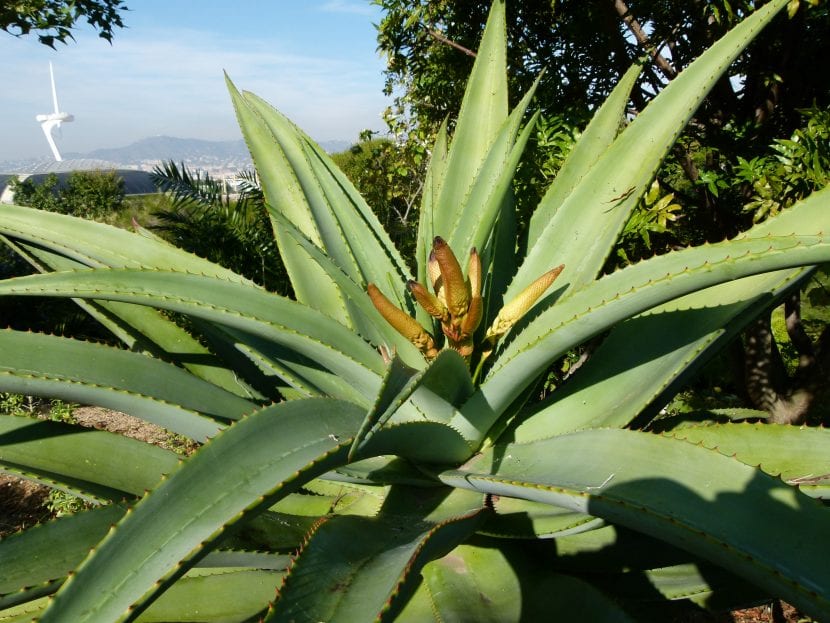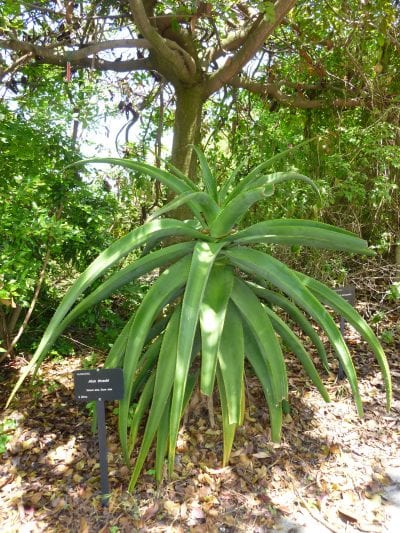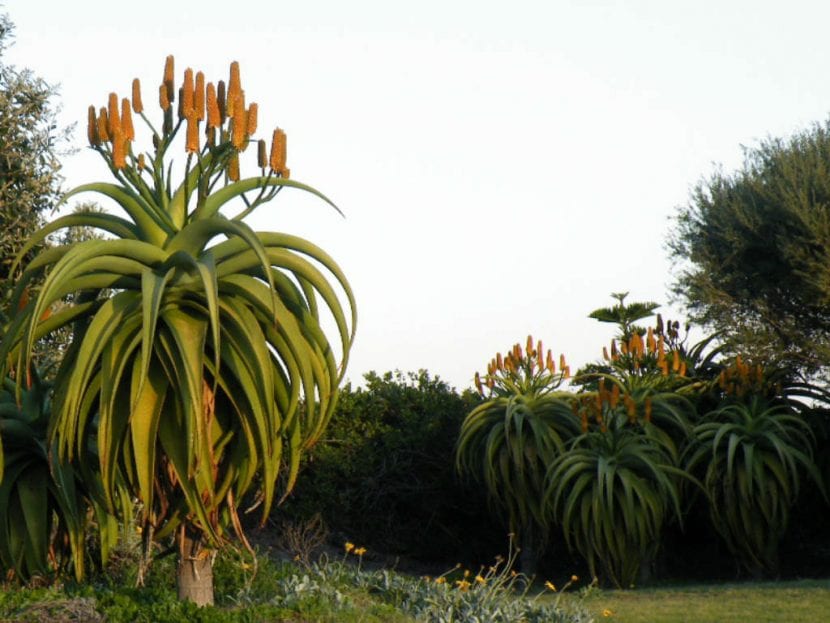
El Aloe thraskii, better known as Aloe de Costa or Aloe de las dunas, is one of the most beautiful arborescent aloes that exist. Its long and fleshy leaves of a beautiful olive-green color, in addition to its spectacular yellow inflorescence, make it a very interesting plant to decorate the garden ... even if it is small 😉.
But not only is it pretty, it is it is also able to withstand mild frosts as long as they are punctual.
What is Aloe thraskii like?

Our protagonist is an aloe native to South Africa (specifically from the dunes of KwaZulu-Natal) that develops a simple stem with a maximum height of 4 meters. It has many long leaves with a length of up to 1,6m, olive-green in color, without thorns except in the middle line, which has some. The flowers are grouped in inflorescences with 4-8 conical racemes. These are very dense, lemon yellow in color.
Its growth rate is, like the rest of arborescent aloes, very slow. But it is one of those that grows closer to the sea, so if you live near a beach or the coast, you can have it outside if the climate is mild.
How do you take care of yourself?

Image - World of Succulents
Have you fallen in love with this aloe and would you like to know how to take care of it? Do not worry. You are not the only one 🙂. Here is your care guide:
- Location: whenever possible, it must be kept outside, in full sun. In the event that you do not have a garden or that in winter it is very cold, you can also have it indoors, in a room where a lot of light enters naturally.
- Soil or substrate: it is not very demanding, but it is important that you have very good sewer system otherwise its roots could easily rot.
- Irrigation: the soil must be allowed to dry completely before watering.
- Subscriber: it is important to fertilize it during spring and summer with a fertilizer for cacti and succulents, or by adding a small spoonful of Nitrofoska every 15 days.
- Transplant or planting time: in spring.
- Multiplication: seeds in spring-summer.
- Rusticity: withstands cold and frosts down to -3ºC, but they must be punctual and of very short duration. In any case, it must be protected from hail and snow.
Have you heard of this plant?
Hello,
Tenho em meu jardim duas Aloe Trakii. Some of them are like orange folhas for a few months. Or what posso fazer to make it turn green?
Hello Renata.
The color will no longer be green. However, if those leaves are old, they will eventually dry out and you can remove them.
By the way, does the sun shine more than the other specimen? It may be that it is burning a little.
I advise you to fertilize them with mineral fertilizers (blue nitrophoska), with a large spoonful or two once a month.
A greeting.